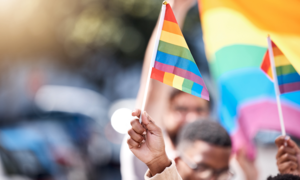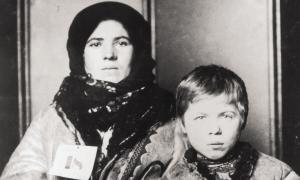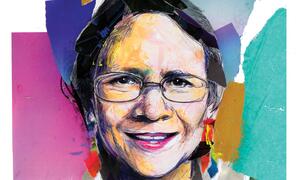article
1,362 Results
article
My Pride Is Black, My Juneteenth Is Queer

The celebration of Pride and Juneteenth offers an opportunity for reflection on intersecting identities and highlights the need to support and make space for Black LGBTQ youth.
page
What Are the Values of Democracy?
The ideals of democracy are at the core of our shared values and national identity. This resource examines our democratic values as a step in understanding our politics, government and country today. Learn more with LFJ's Civics for Democracy series.
January 8, 2025
article
An Educator’s Guide to the Immigration Debate

What you need to know to facilitate classroom conversation about this controversial topic.
article
A Wise Latina Woman: Reflections on Sonia Sotomayor
“I would hope that a wise Latina woman with the richness of her experiences would more often than not reach a better conclusion than a white male who hasn’t lived that life.” These few words, spoken casually by Sonia Sotomayor at the annual Mario G. Olmos Law and Cultural Diversity Lecture at UC-Berkeley in 2001, came back to haunt President Barack Obama’s nominee for the United States Supreme Court during the spring and summer of 2009. Hard to believe that this brief statement could cause such anguish, particularly among the conservative white senators who form part of the Senate Judiciary Committee, yet they led to days of arrogant grilling by the Senators and weeks of newspaper articles and commentary by television pundits speculating on what Sotomayor meant, whether it would hurt her confirmation, and what it would signal for the new court.
article
Portfolio Activity for “Class Outing”
LGBT educators enjoy more openness and acceptance than ever before. But their gains have been fragile and uneven. And many still feel it’s safest to teach from the closet.
article
Toolkit for “Religion in the Locker Room"
When the authors of the First Amendment to the U.S. Constitution wrote, “Congress shall make no law respecting an establishment of religion, or prohibiting the free exercise thereof,” they sparked a debate that continues
the moment
Liberation Lit: Book Reviews
Banned Books Week is Sept. 22 to 28, 2024. Learning can help us to resist hate and bias and counter limited narratives that have traditionally excluded diverse perspectives.
- Liberation Lit
- Reading Together: Books for Children
- Reading for Justice: Books for Teens and Young Adults
lesson
The Truth About Voting
In this lesson, students will learn some common myths about voting today, think through who these myths might benefit, learn why these myths are incorrect and consider how people might ensure every eligible citizen has a chance to vote. In an extension activity, students learn how to register to vote.
October 8, 2020
article
Debbie Reese on Book Bans and Native Representation

Scholar Debbie Reese talks book bans and the fear of a just society.
